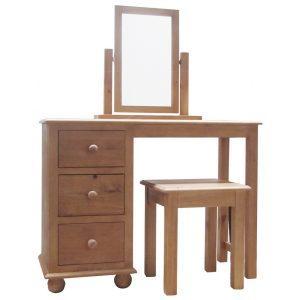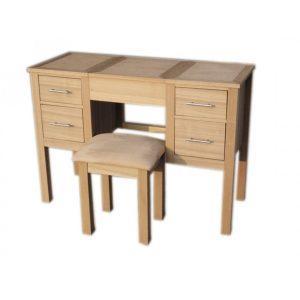 American furniture are rare to find outside the United States and are due to their rarity sold very expensive a high price for collectors. There is not much difference in their styles and their designs and decorations of a European. The difference between Europe and the Americans is that Americans used the local woods like apple, cherry and maple besides the walnut and mahogany.
American furniture are rare to find outside the United States and are due to their rarity sold very expensive a high price for collectors. There is not much difference in their styles and their designs and decorations of a European. The difference between Europe and the Americans is that Americans used the local woods like apple, cherry and maple besides the walnut and mahogany.
American furniture of the seventeenth century, similar in England some fifty years before, and this time delay has to be continued through most of the eighteenth century present. But in 1800 more or less, with better conditions in the new country and better transportation across the Atlantic, there was little difference between the inside of a house Fashion New York and London. When it is expected that the first settlers of New England, the British Isles that the furniture was made for him remembering how his homeland. As it was, but local variations occurred very soon. For example, the great Jacobins was chair tube constantly copied in America and remained popular during the eighteenth century, but instead fills in the back with a panel of caning often it was a quantity number given in the form and it was the "banister- back of the chair,
Similarly kneehole offices and chest when it became fashionable in mahogany, English style front line were made in Newport, Rhode Island, with a "front block calls, a kind of failure before serpentine one or more "blocks" plates carved with a sunbeam or shell. Such variations on the designs of London was in the popular village where they were made, but are not widely used. the different districts had each specialty had been resolved but the most notable was certainly the furniture made in Philadelphia. Basically, through the design of English eighteenth century, these chests, tables, chairs and other pieces were different with sculptures and fretwork in a style that work clearly in London They are.
Later in the first half of the nineteenth century, an American version of Sheraton furniture was very popular. The best known examples are the work of Duncan Phyfe, who had emigrated from Scotland, whose name is probably the best known of all that American cabinetmaker. Born in 1768, he died in the year. 1854
In addition to pieces in the cities made American collectors eagerly seek old furniture country made, and there is great interest in Windsor chairs and similar pieces are very similar to European originals. Indeed eighteenth century German settlers in eastern Pennsylvania versions of their furniture as "Pennsylvania German" or "Dutch1 Pennsylvania especially in bright fruit woods, and are also very popular in the United States.

Lowboy:
Lowboy is a modern word to describe what we call in England a dressing table; a low table with drawers and equipped to pink.
Highboy: a low platform, but also a chest of drawers on top.
office:
It is described in England as a chest of drawers: the English office or office is in the United States known as "tipping reception."
Secretary:
pending receipt with a top shelf: it is called in England an office-library
Besides Duncan Phyfe, mentioned above, another important cabinet are:
William Savery, of Philadelphia (1721-1787). John Townsend and his brother John Goddard, Newport, Rhode Island (both lived about 1730-1785).
John Cogswell, Boston (ca. 1769-1818).
The history of decorative furniture
Here let us know more about the drawers designed chest, breast, wine glasses and coffee tables. They are not designed for daily use by the common man. They were with different designs and decorations.
chests
He has developed chest simple chest, as indicated above. The drawers were placed under the breast, and not long before all the furniture, accommodation is equipped with drawers, as we know it today.
er no more than thirty inches high, two feet wide and one foot back and forth, it's no wonder. high demand and very expensive When old walnut furniture was enjoying a vogue in the 1920s, examples of face hand and cheap labor; many fakes were made. Now, 40 years later, some of them had to tell a lot of wear and careful consideration between old and new need.
Continuous drawers in popularity throughout the eighteenth century and very beautiful examples of mahogany. Some were serpentine; as the top drawer dressing table with compartments for combs, brushes and toiletries, as well as the heavily carved front corners. gilded metal were simple straight long, and relied for their ornamental handles.
inlaid mahogany dressers arrived mode 1780, and were with straight or curved facades. They followed be performed with slight variations in the design of many years.
chiffonnierThere is a small bookcase or a cabinet with open shelves up. A decorative piece of furniture, the first was about 1800, and sat very popular during the nineteenth century.
Montana
wine coasters are stands for bottles or decanters for use at the dinner table. Some were in the form of wooden boxes with wheels; others were of japanned papier-mache, silver or plate. coasters cheese is usually made of mahogany and dates from around 1790. They rise with a square base formed in small boat paper. Today, almost not used to keep large round cheese, for which they were designed, but they have a new lease on life as fruit containers.
coffee table
Although small, low table can be, and is called a coffee table, the term especially for groups of three or four tables from 1790 is applied; the last of which were "tables" Quartetto calls. As the name suggests, they were conducted in groups of four and were designed so that each slide one inside another. When placed, so it took more space than the largest. Mahogany and rosewood, have almost continually in production and old systems are rare.
These furniture like dressers with drawers decorated a small decorative shelf for books or closet with a wine, coasters open up Racks are bottle holders or decanters for use at the dinner table. small coffee table and a coffee table are called. Usually they are walnut, mahogany, oak and rosewood.

